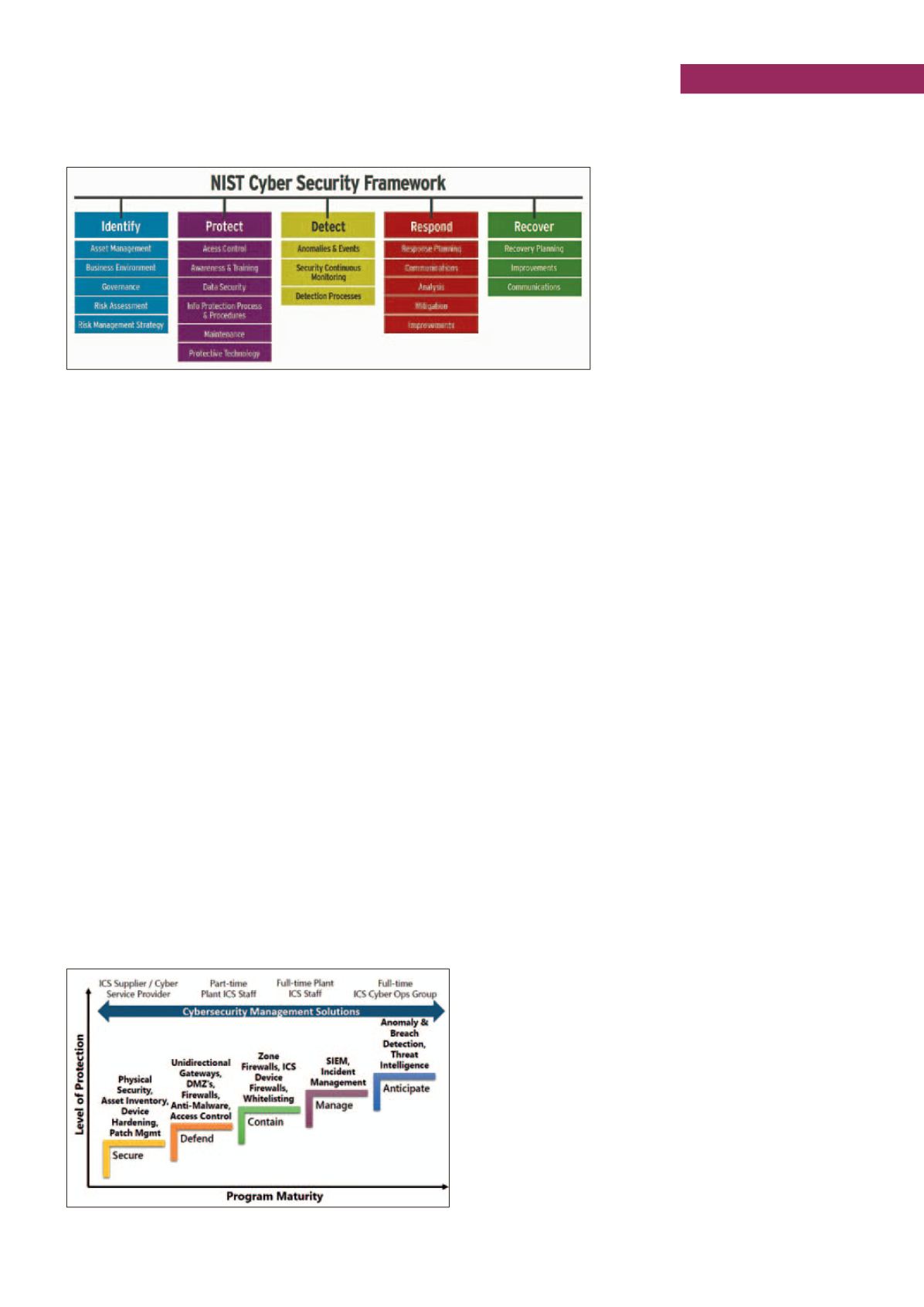

CONTROLLO
tecnica
Automazione e Strumentazione
Gennaio/Febbraio 2018
87
functional policy framework of
computer security guidance
for
how organizations can assess and improve their ability to prevent,
detect, and respond to cyber-attacks.
Based on above issues the main customer request is to have a sin-
gle, agnostic solution that can support all control system cyber
assets, regardless of supplier, model, or vintage.
A solution that supports for asset inventory data collection and auto-
mation system change management whether it is cyber related or not.
And a solution that supports local and remote access to information.
While some suppliers offer broad-based solutions, the coverage of
most products is generally limited to specific kinds of assets and
specific functionality.
ARC Advisory Group
has recently defined the list of
available
industrial cybersecurity management solution functionality:
Security Management Dashboard:
A central platform for
managing all security information about cyber assets, vulnera-
bility alerts, patches, and firmware/software/hardware updates;
launchpad and integration platform for a variety of security
maintenance support modules.
Security Maintenance Support:
Modules that enhance staff
cybersecurity management capabilities and reduce the time
required to perform security maintenance tasks like asset discov-
ery and inventories, change and patch management, backup man-
agement and policy compliance.
Remote Security Management Support:
Secure remote access
software/services that enable remote maintenance of cyber assets
and incident response support.
Incident Management Support:
Security Information and
Event Management (SIEM) and other
solutions that manage security event infor-
mation (alerts, configuration changes,
etc.), help people analyze and deal with
suspicious situations.
Then the
Situational Awareness
(SA)
of cyber-security and operational inci-
dents, ideally with high detection and low
false-positive rates, is a key factor as well as
the real-time alerts notification.
To support SA in a scenario of increasing
and challenging threats new and advanced
technologies are needed.
Machine learning, device profiling technologies and deep packet
inspection (DPI) applied to industrial network help to create an
adaptive whitelisting baseline: a sort of ‘secure’ network commu-
nication model where the ‘black hat’ struggling to work.
Another important element is the active threat intelligence ser-
vice (possibly given by an agnostic laboratory) to early discover
‘0-days’ vulnerabilities with data derived and qualified from
different deployments. Tools for automatic assessment are also
a way to check the current network architecture resilience particu-
larly whether possible attack vectors are clearly indicated.
But is OT Cyber Security all related to passive monitoring and
vulnerability prevention?
Surely prevention and monitoring reduce risks but do not totally
eliminate the problem because
threats are mutants
.
Next generation firewalls (there are specific types for industrial
applications) dynamically tightening or changing the firewall
rules in case of active threat.
And what to do if already damaged (e.g. ransomware or similar)?
The key to rapid recovery is the ability to access and download the
correct program to the device.
A common central repository
of
all program changes ensures that if a device fails, the most current
copies of program logic and documentation are available so plant
operations can be restored quickly and correctly.
This is true for automation devices as well as PC based appli-
cation (e.g. Scada or Historian) with the help of powerful auto-
mated recovery tools.
References
[1]
“Cyber Security Framework v1.1”, NIST (National Institute of
Standards and Technology).
[2]
J. Kosar, “Cybersecurity Maturity: We haven’t been hacked so
we’re good… zright?”, ARC Forum 2017.
[3]
S. Snitkin, “Cybersecurity Technology and Compliance Man-
agement Solutions”, ARC Advisory Group.
[4]
S. Snitkin, “What’s Really Needed for Network and Endpoint
Protection?”, ARC Advisory Group.
[5]
C. Bodungen, B. Singer, A. Shbeeb, K. Wilhoit, S. Hilt,
“Hacking Exposed Industrial Control Systems: ICS and Scada
Security Secrets & Solutions”.
[6]
“Critical Infrastructure: Security Preparedness and Maturity”,
Unisys and Ponemon, 2014.
[7]
www.servitecno.itThe 5 functions of the NIST Framework
ARC Cyber Security Maturity Model


















